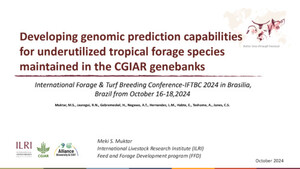
Using microsatellite data to estimate the persistence of field‑level yield gaps and their drivers in smallholder systems
Abstract
One way to meet growing food demand is to increase yields in regions that have large yield gaps, including smallholder systems. To do this, it is important to quantify yield gaps, their persistence, and their drivers at large spatio-temporal scales. Here we use microsatellite data to map field-level yields from 2014 to 2018 in Bihar, India and use these data to assess the magnitude, persistence, and drivers of yield gaps at the landscape scale. We find that overall yield gaps are large (33% of mean yields), but only 17% of yields are persistent across time. We find that sowing date, plot area, and weather are the factors that most explain variation in yield gaps across our study region, with earlier sowing associated with significantly higher yield values. Simulations suggest that if all farmers were able to adopt ideal management strategies, including earlier sowing and more irrigation use, yield gaps could be closed by up to 42%. These results highlight the ability of micro-satellite data to understand yield gaps and their drivers, and can be used to help identify ways to increase production in smallholder systems across the globe.
Citation
Paliwal, A., Balwinder Singh, Poonia, S. and Jain, M. 2023. Using microsatellite data to estimate the persistence of field level yield gaps and their drivers in smallholder systems. Scientific Reports 13:11170.









